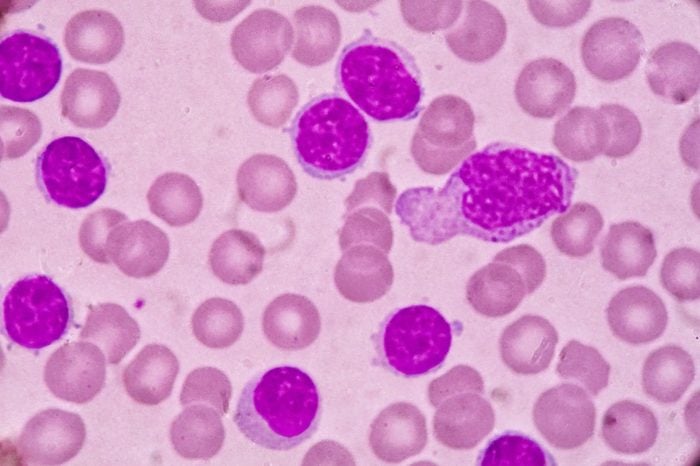
What is leukemia?
Leukemia is a cancer of the blood and bone marrow, a malignancy that causes an abnormal production of certain blood cells. As the unhealthy blood cells crowd out healthy ones, the blood and immune system function begins to falter and you may notice physical symptoms. In 2019, doctors will diagnose an estimated 61,780 people with leukemia and about 22,840 people will die from the disease, according to the National Cancer Institute. The disease can get worse quickly if you have a type known as acute leukemia, or progress more slowly and get worse over time if you have a type known as chronic leukemia. While the following symptoms can be subtle signs of leukemia, the same symptoms can also be caused by many other diseases and conditions—many of them benign. If you’re concerned, see your health care provider for an evaluation. Make sure you know the other symptoms of cancer that women commonly ignore.

Fatigue and weakness
Fatigue and weakness are the most common leukemia symptoms, according to Mark James Levis, MD, PhD, the program leader of the hematologic malignancies and bone marrow transplant program at the Johns Hopkins Sidney Kimmel Comprehensive Cancer Center in Baltimore. These signs are often caused by anemia, which can be due to a red blood cell deficiency that leads to physical exhaustion. In both chronic and acute cases, you may experience a range from slight fatigue to extreme physical weakness, but in all cases, the symptoms worsen over time. “It creeps up on people, that’s the problem,” says Dr. Levis. Here are some of the 50 cancer myths you need to stop believing.
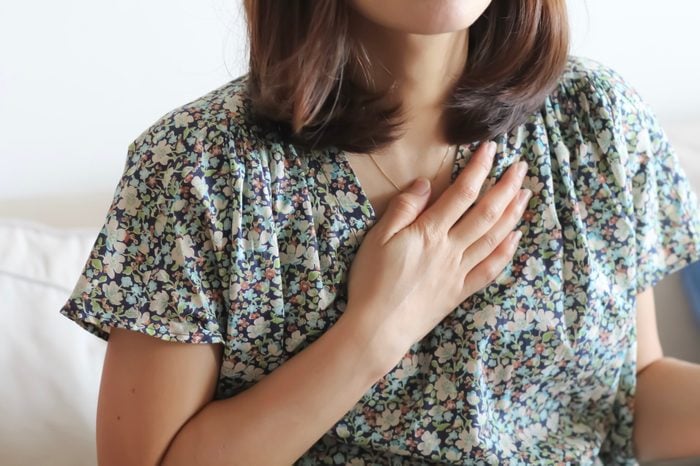
Shortness of breath
Certain types of leukemia impair your production of red blood cells. These cells are charged with carrying oxygen to all of the cells in the body. When there is a dearth of red blood cells, shortness of breath may occur. (Shortness of breath also makes the list of lung cancer symptoms., but can have many other causes too.) As leukemia patients grow weaker and more fatigued, they may also experience shortness of breath that stems from anemia or, in much rarer cases, swollen lymph nodes in the chest. “They’re panting, they’re out of breath,” says Dr. Levis. “Walking across the room might be difficult.”

Excessive or spontaneous bruising
Unexplained bruises without any physical trauma may be one of many leukemia symptoms, according to Pamela Crilley, DO, chair of the department of medical oncology at the Cancer Treatment Centers of America and chief of medical oncology at the Eastern Regional Medical Center in Philadelphia. Unusual bruising is a result of a low platelet count or other clotting issues, explains Dr. Levis. “You will bruise spontaneously, seemingly doing nothing,” he says. “It can be anywhere, but typically they’ll be on the extremities—legs and arms.” These 30 simple habits may help prevent cancer.

Unusual bleeding
Similar to bruising, unusual nosebleeds or bleeding in the gums, bowels, lungs, or head may be a sign of platelet deficiency and clotting problems, which can indicate acute forms of leukemia, says Dr. Crilley.
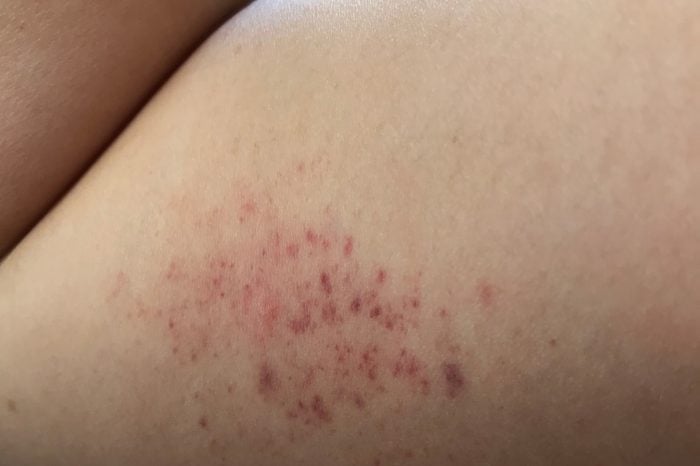
Petechiae (small red spots under the skin caused by bleeding)
Small round spots that appear on the skin caused by bleeding, petechiae (pronounced puh·tee·kee·uh) may be a symptom of leukemia. The spots, which you might not notice because of their small size, painlessness, and placement in the lower extremities, indicate a low platelet count. Petechiae are typically found around the ankles because gravity results in the accumulation of bodily fluids in the lower legs throughout the day, Dr. Levis explains. Petechiae can also be caused by vasculitis, reaction to a medication or an infection, among other things. Scientists wish you knew these 21 reassuring things about cancer.

Swollen and enlarged gums
Although an increase in the size of the gums, also known as gingival hyperplasia, is usually only found in a small number of people with acute leukemia, it’s one of the most obvious leukemia symptoms. “If you have a patient with leukemia, you always look in their mouth to see if the gingiva has gotten bigger,” says Dr. Crilley. The gums may look swollen, adds Dr. Levis, and you nearly always feel a strange tightness in your mouth. Check out these other surprising diseases dentists find first.

Feeling full or bloated
One sign of chronic—and sometimes acute—leukemia is an enlarged spleen, which may result in a loss of appetite. (Your spleen is located left of your stomach and under your ribs on your left side). This organ is tasked with helping your body fight certain types infections and helps filter the blood. An enlarged spleen may cause “early satiety,” says Dr. Crilley. “Patients eat a little bit of food, they feel full quickly because the spleen is pushing up on the stomach.” (Your spleen is actually one of nine organs you can live without.)

Discomfort or pain in the upper left abdomen
An enlarged spleen caused by leukemia sometimes results in abdominal discomfort or even sharp pain. Dr. Levis had a patient with chronic leukemia who had part of his spleen die due to spleen enlargement. “It hurt like heck. It was a sharp pain in his abdomen,” he says. Because the spleen is located in the upper-left quadrant of the abdomen, the discomfort usually occurs there. Here’s what else it could mean if you have left side abdominal pain.

Fever or chills
Feverishness or chills may occur in a quarter of acute leukemia cases, but they almost never occur in chronic leukemia cases, says Dr. Levis. A person with leukemia may develop a fever that lasts for more than 1 to 2 weeks. (Here’s what’s happening to your body when you have a fever.) Leukemia also affects the body’s ability to fight infection and low-grade fevers tend to accompany infections.

Night sweats
Night sweats are often caused by infections that may be linked to leukemia. “You’re just drenched, and the sheets are drenched,” says Dr. Crilley. “Something like that needs to be investigated.” However, there are also many causes of night sweats that have nothing to do with cancer. What else causes night sweats? Here are 14 medical explanations.

Pounding headaches
When there is a shortage of red blood cells, which supply oxygen to all the cells in the body, many symptoms may occur including headache, according to the American Cancer Society. Although not common, frequent headaches may be a sign of leukemia-related anemia. These are the signs of cancer men are most likely to ignore.
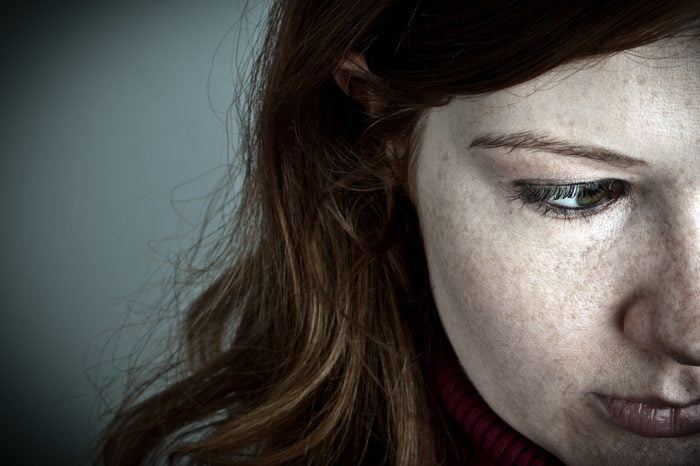
Extreme pallor
Like headaches, fatigue, and shortness of breath, unusual paleness may be a sign of anemia in acute and some chronic leukemia patients. “If they’re looking pretty pale, they’re already pretty advanced and pretty sick,” says Dr. Levis. “They’re almost always extremely fatigued. If your red blood cell level is low enough to be pale, you’re panting when you go across the room.” If you have darker skin, it can be harder to detect, but paleness may show up as a lightening of the inside lining of the eyelids or the inside of the mouth. Paleness can also be a sign of vitamin B12 deficiency.
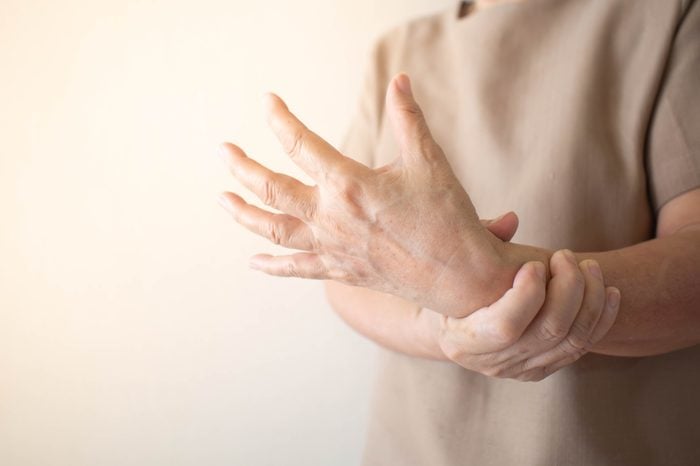
Bone pain
While relatively uncommon, achiness in the bones is a sign of both chronic and acute types of leukemia, according to Dr. Levis. Leukemia cells are made inside the bone marrow, so if you feel anything from persistent mild achiness to extreme pain in your bones, it’s best for you to seek medical attention. These are the everyday habits that affect bone health.

Swollen lymph nodes
A lymph node check is one of the self exams you should be doing regularly but probably aren’t. Check your neck, armpit, and groin areas for noticeable but painless swelling of your lymph nodes. It’s normal for the lymph nodes to go up and down in size during periods of localized infection or inflammation, but if they stay enlarged or keep growing, that may be one of the symptoms of leukemia or lymphoma, says Dr. Crilley.

A skin rash
Approximately one in 20 leukemia patients may have a skin rash that falls into one of two categories: a leukemia of the skin, or a rash caused by Sweet’s syndrome, which is commonly associated with leukemia, according to Dr. Levis. “Leukemia of the skin almost always looks like your skin has a lump inserted inside it,” he says. Sweet’s syndrome rashes, on the other hand, appear red and angry, similar to an allergic reaction. Although skin rashes come in all shapes and sizes, leukemia-related rashes have one thing in common: they will continue to grow and spread. Follow these 15 things that oncologists do to avoid cancer.

Frequent or recurring infections
If you have that one small infection that just won’t go away, no matter how many antibiotics your physician prescribes, it may be time for a check up. A complete blood count can be used to check for abnormalities in your white blood cell, hemoglobin, and platelet levels. Abnormal white blood cell levels lead to an impaired immune system, which could explain frequent infections and the feeling of always being on the verge of an illness. That, coupled with other signs such as fatigue or bruising, should be enough to send you to the doctor. “Leukemia is always a surprise; it sneaks up on you,” says Dr. Levis. Because leukemia patients can be asymptomatic or display symptoms that are common to other illnesses, it’s important to get a physical examination, blood count, and bone marrow biopsy, which will characterize the exact type of leukemia and dictate the necessary treatment. Next, check out the hopeful cancer statistics everyone should know.
